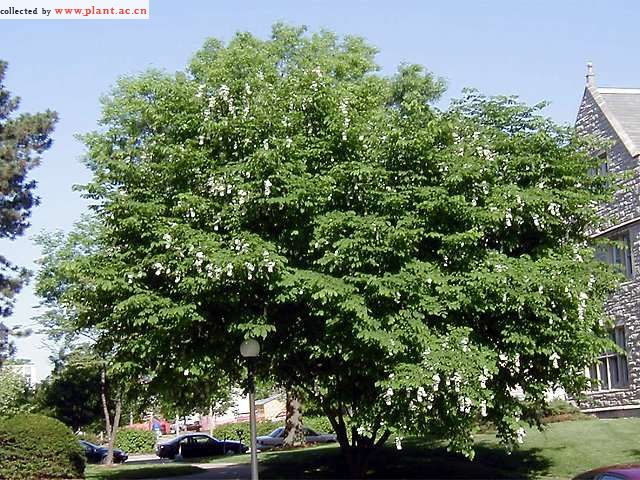Cladrastis kentukeaAmerican yellowwood
科:蝶形花科
Family:fabaceae
属:香槐属
common name:American yellowwood
introduce:Plant Type: Tree
Family: Fabaceae
Missouri Native: Yes
Native Range: Southeastern United States
Height: 30 to 50 feet
Spread: 40 to 55 feet
Bloom Time: May
Bloom Color: White
Sun: Full sun (only)
Water: Medium moisture
Maintenance: Low
General Culture:
Easily grown in average, medium wet, well-drained soil in full sun. Prune in summer only because cuts made in winter or spring tend to bleed considerably.
Noteworthy Characteristics:
Yellowwood is a medium growing, deciduous tree of the legume family which features a broad, rounded crown and typically grows 30-50 tall. Pinnately compound leaves (usually with 7-11 leaflets) open as yellowish green, turn bright green in summer, and then turn yellow in fall. Tree may not flower for the first 8-10 years, but once the bloom begins, it can be spectacular. Intensely fragrant, wisteria-like, white flowers in large, drooping, terminal panicles (10-15" long) will virtually cover a mature tree in late spring (profuse bloom in alternate years). Bloom is similar in appearance to that of black locust (Robinia). Flowers give way to flat, brown seed pods (2.5-4" long) which mature in September-October. Wood of this tree contains a yellow dye which distinctively colors the heartwood and gives rise to the common name of yellowwood. A Missouri native tree that is only found in several southwestern counties near the White River and its tributaries. Cladrastis lutea and Cladrastis kentuckea are synonymous.
Problems:
No serious disease or insect problems.
Uses:
Excellent, low-maintenance, small shade tree for residential lawns, particularly on smaller properties. Also may be planted near patios and terraces. May be effectively grouped on larger properties. Roots go deep, so other plants may be easily grown underneath.
